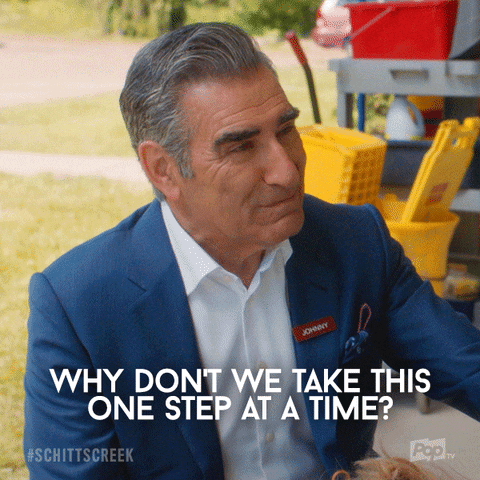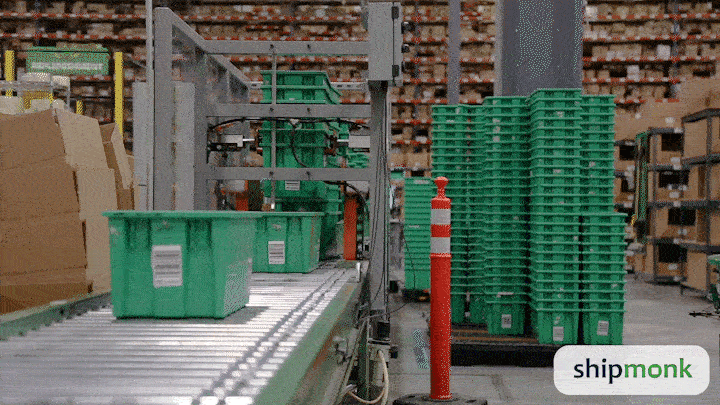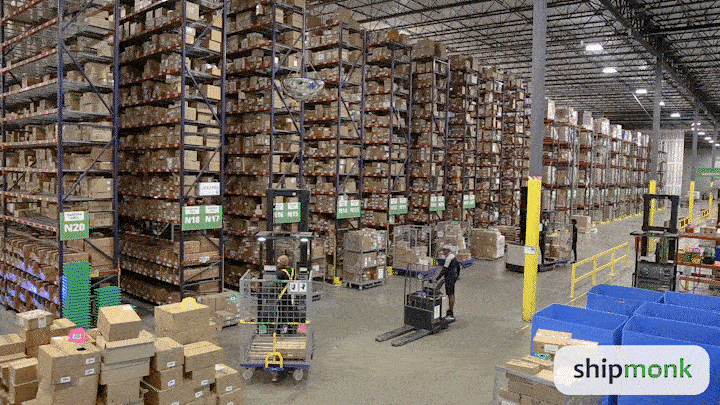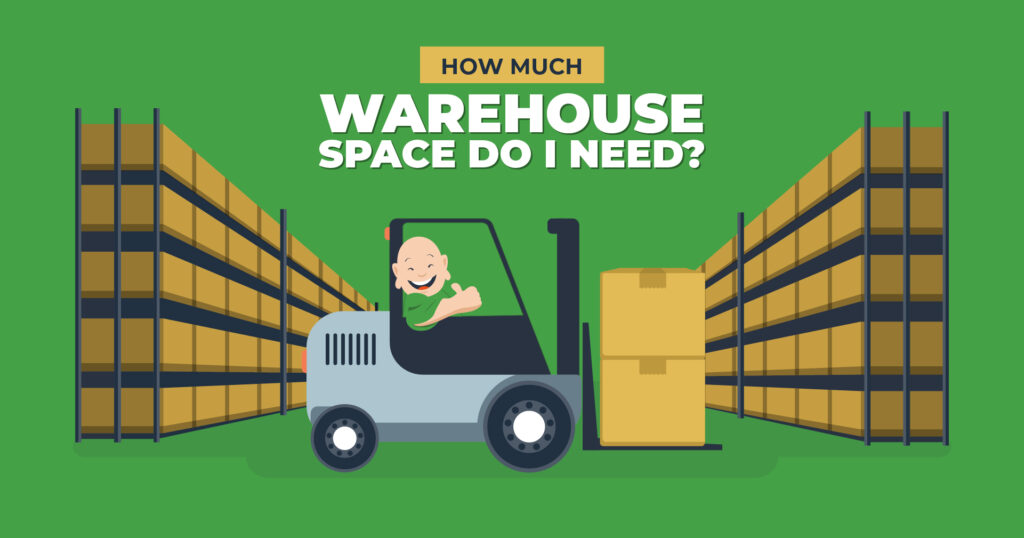8 Factors Ecommerce Brands Should Consider
What makes ecommerce logistics particularly challenging is not only its extensive scope—from packaging to transportation and beyond—but its constant fluctuations. No two days are ever the same, and your warehouse-storage needs are a prime example.
While it makes sense to think that more orders equals more warehouse storage, it’s not always so cut and dry because your needs will change depending on season, SKU count, sales, and more. In order (pun intended) to maximize your profits, it’s important to dig a little deeper so you can strike the right balance between not wasting space and having enough product to go around. So let’s look at 8 key factors to consider when determining your warehouse storage needs.

#1 Your SKUs
This is the easiest category to address when investigating how much warehouse space you need. How many SKUs do you have in your product line? What are the actual dimensions and how much space does each item take up? Once that’s out of the way, let’s look at how those SKUs feed into your greater inventory.
Fact: small products take up less space than bigger ones. While you can’t necessarily help the physical space one of your products takes up, you can control how much volume of each product to keep in stock at once. So regardless of whether you have 100 SKUs in your inventory or 10, when deciding how much warehouse space you need you have to think about how much of each item you want to keep in stock.
#2 Historical Data
Most niches have a natural ebb and flow that usually corresponds to seasonal changes—for instance, an activewear company may get a boost in sales in January as part of New Year’s Resolutions, flower boutiques get spikes in orders around Mother’s Day and Valentine’s, and lawn chairs are bought more frequently when summer is approaching. With that in mind, it’s vital that month over month and year over year you study your sales trends to determine how much to order by season.
But seasonality and holidays aren’t the only hot topics in terms of predicting how much inventory you need in stock. Definitely also look at the historical data when you have sales, special promotions, and new product launches, because all this can affect the order rate of your full family of products. By utilizing the best warehouse, order, and inventory management software, you will have all the data you need to best predict how much of each SKU to keep in stock and when. And by analyzing that historical data, you can understand how much inventory you’ll need to keep in stock at different times of year within your warehouse.
***Pro tip: Combine historical data with other forms of demand forecasting for a greater view of your inventory needs.

#3 Top-Performing Products
While you may love all your products equally, in this case it’s okay (and necessary) that you play favorites. Best-selling products should take up the largest (proportional) chunk of your warehouse storage. It’s as simple as that.
#4 Safety Stock
Safety stock is a type of extra inventory an ecommerce brand keeps in reserve to cover a surge in demand or protect itself against unexpected supply chain issues. Manufacturers can also keep safety stock to cover the ecommerce businesses they work with.
When deciding how much warehouse storage space you need, add in extra space for safety stock for all your products. Safety stock can come in handy during peak season and other seasonal fluxes, unpredictable spikes in orders, and more.
The gist is that this is “emergency stock” that goes past what you normally account for, and it is vital you have some as a safety net to sustain your company during unexpected shifts in demand. If you do have safety stock on hand, it can help you fulfill orders in crazy times (so you don’t lose out on sales), and prevent negative customer experience (so you don’t have to deal with backorders or stockouts).

#5 Customer Demographics
If you have customers across the country, or even globe, you’ll want to keep inventory in strategic places so you don’t rack up a ton of shipping costs or make your buyers wait for longer delivery times. And if you are a smaller, growing brand, you’ll want to have the foresight to do this and plan accordingly now. The more forward-thinking you are as you grow and scale your ecommerce business, the easier it will be for those puzzle pieces to fall into place. Which is why, when you ask the question “How much warehouse space do I need?” you should consider how many warehouses you’ll spread your inventory across. ShipMonk, for example, has 12 state-of-the-art locations around the world so our ecommerce clients can get optimal shipping rates and shipping timeframes.
And hey, if you’re worried about how complicated this may be; don’t worry. Splitting inventory doesn’t have to be super complex, and you don’t need to be rolling in an avalanche of orders to do it, either. So as you determine how much warehouse storage space you need, consider how many locations you want to spread that across. And when you do that, think about order trends by location, as in: Where are more of your orders coming from?
If you have a ton of orders coming from the West Coast, for example, then it would make sense to position your inventory closer to that side of the country. If you are a growing ecommerce brand and most of your international orders are coming from the EU vs. Central America, you’d want to utilize warehouse space in the UK over something south of the border. Or in ShipMonk’s case, in this scenario you’d want to use one or both of our ShipMonk Europe locations vs. our (also awesome) Mexico location.

#6 Returns, Mishaps, and More
No one likes dealing with returns. You can definitely take steps to reduce the risk of returns, for instance by providing as much info about your products as possible and optimal pics from different angles. Unfortunately, returns are part of the reality of owning an ecommerce business. When it comes to matters of warehouse space, one of the biggest hassles that returns pose is the process of receiving and storing unwanted inventory. All that requires space, so be sure you account for that extra storage in any warehouse that receives or processes your returns.
***Pro tip: To better manage your ecommerce brand’s post-purchase experience, explore MonkProtect. This fully integrated add-on for ShipMonk clients saves you time, provides branded tracking, and can reduce negative fallout with a problematic order by making it easy for customers to file their own claims for your review.

#7 Supply Chain
Even with the best data, best partners, and best planning, some things are out of your control. If the global supply chain is ever thrown for a loop, you can still be proactive in shifting your operations. Make sure you have a way of keeping up with the latest news and developments when this happens so you can understand active changes in demand and shipping timelines.
#8 Cost
Last but certainly not least, cost plays an integral role in determining how much warehouse space you need. If you have products with lower margins, slower sellers, are just getting started, etc. budgets can be tight for your ecommerce brand. With that in mind, even if it’s tempting to lean into some of the above factors like safety stock or splitting inventory across many warehouses, you need to be equally shrewd and frugal.
What SKUs do you need to have, and how many can you afford to have? Check your inventory management software to ascertain your best reorder points so you can keep lower levels of inventory in stock and not be worried about running out as orders come in. Calculating your reorder points is crucial if you want to save money on warehouse space without sacrificing peace of mind or profit when orders come in.

Warehouse vs. Fulfillment Center
We’ve talked a lot about warehouse storage space in this article; however, it’s important to note the difference between a regular warehouse and a fulfillment center.
A warehouse is a storage compound where ecommerce brands can store large amounts of inventory. How much you pay for space, and where that space is located within the warehouse, depends on the amount of product you are storing and how quickly it moves. However, the people who work at the storage warehouse aren’t necessarily going to move it for you, or keep track of it, or do anything past putting it on its proper shelf. That’s not super helpful for a growing ecommerce brand. Which is where fulfillment centers come in.

A fulfillment center is the heart of a 3PL (third party logistics) operation. It has warehousing capabilities (i.e. storing your inventory). In addition, the team members at fulfillment centers expertly pick, pack, and ship out those products to customers. Working in beautiful coordination with advanced order fulfillment and inventory management software, a fulfillment center makes operating an ecommerce brand epically easier.
Do I Need a Warehouse or Fulfillment Center?
All of ShipMonk’s 12 thriving worldwide locations are fulfillment centers. So if asking that important question “How much warehouse space do I need?” also ask yourself “Do I need a warehouse or fulfillment center?” If you own an ecommerce business and would like to stress less and grow more, as the ShipMonk mission states, then fulfillment centers should be in your future. We’ll handle every step to get your goods to the people who bought them, including storing your inventory like a warehouse does.

Only Good Things in Storage . . .
Deciding how much warehouse space you need is a big step in your ecommerce brand’s journey because it means you have evolved past fulfilling orders out of your home or garage. That is a huge win! ShipMonk is here to help you continue that train of triumph. We not only warehouse your inventory in strategic, secure sites across the globe, our high-functioning, technology-driven fulfillment centers help you streamline your overall operation—increasing efficiency, decreasing the possibility of error, saving time in the whole order fulfillment process, and allowing you to focus on scaling your brand.
If that sounds like the solution to your needs, then contact us today. We’re always ready to help ecommerce brands take that step toward a smoother, all-inclusive order fulfillment experience. Fill out our quote request form now and get a sneak preview of the partnership you’re in for with our inventory management software video tour below:





